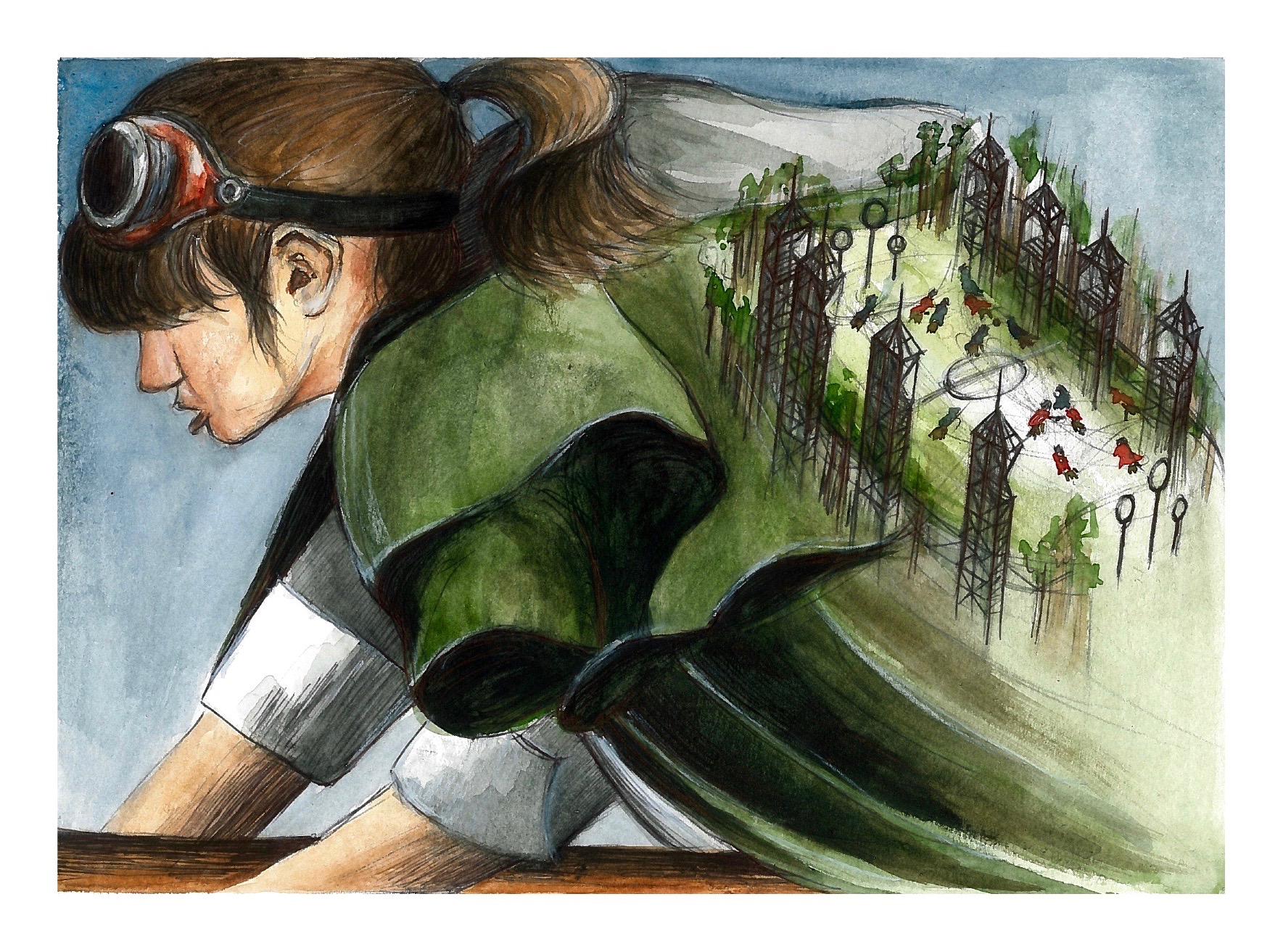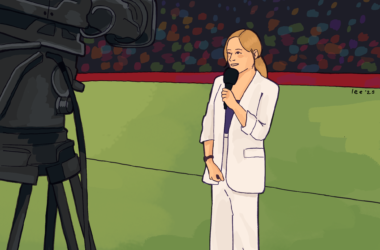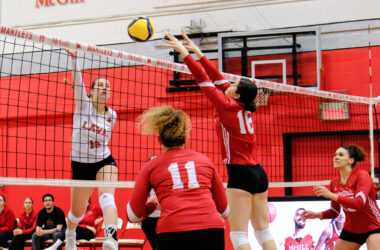McGill often draws comparisons to Hogwarts because of its high towers, majestic archways, and strong academic culture. However, the comparison runs much deeper than aesthetics and academia. McGill fields not one, but two Quidditch teams, both of which competed in the Eastern Championships in Mississauga, Ontario from Nov. 11-13.
In Quidditch, players are divided into four positions: Three chasers, two beaters, a seeker, and a keeper, each of whom run around the field with a flightless broom between their legs. Additionally, one person dresses as the snitch in a gold morphsuit with a tennis ball attached to their back. The team that catches the snitch is awarded 30 points and immediately ends the game. Chasers try to throw the quaffle—a slightly deflated volleyball—into three hoops to score 10 points, while the keepers try to prevent goals. Beaters throw dodgeballs at chasers and seekers, who, if hit, must exit the play and touch their own hoops before re-entering the game.
The McGill Quidditch Club was created in 2008, becoming the first muggle Quidditch team in Canada and the only co-ed team at McGill. The sport has grown significantly since coming to McGill and competition to get on the team has increased along with the popularity of the sport. A second team, Canada’s Finest Quidditch Club, followed in 2012 due to high student interest in the sport.
“McGill has been known to have large scale tryouts for Quidditch,” Lina Du, U3 Engineering and Beater for the McGill Quidditch team, said. “In the past four years, we have had over one hundred new players and veterans show up to tryouts [for…] only forty-eight positions.”
Indeed, tryouts are becoming increasingly competitive due to the rising prevalence of North American Quidditch as a whole. Both McGill Quidditch teams travel across North America, playing in places ranging from Myrtle Beach, South Carolina to Vancouver, British Columbia.
“A lot of people think Quidditch is just a game for nerds,” Du explained. “But Quidditch is actually very competitive and it is becoming a more established sport.”
As Quidditch grows in popularity, students are joining not only for a love of Harry Potter, but also to stay in shape, represent McGill, and compete across North America. Competitors include American and Canadian university teams, recreational teams, and CEGEP teams, making the sport a medium that brings people together across borders and communities. Quidditch and the McGill program have gained increased recognition on a global scale.
“A few of our players even went to Germany to compete in the World Cup,” Du said.
The co-ed nature of the sport fosters the community element even further. Most varsity and club sports that exist at McGill are delineated based on gender, but in Quidditch, all are welcome to try out and play. For Du, this aspect is a huge draw to the sport.
“One of the best things about Quidditch is that everyone can play and compete, ” Du said.
The competitive nature of the game and the community element are sure to make the sport even more popular over time. With Canadian schools like the University of Guelph, Western University, and University of British Columbia also fielding competitive teams, perhaps one day the sport will gain varsity status across North America, allowing the game to transcend fiction to become a bona fide varsity sport.









